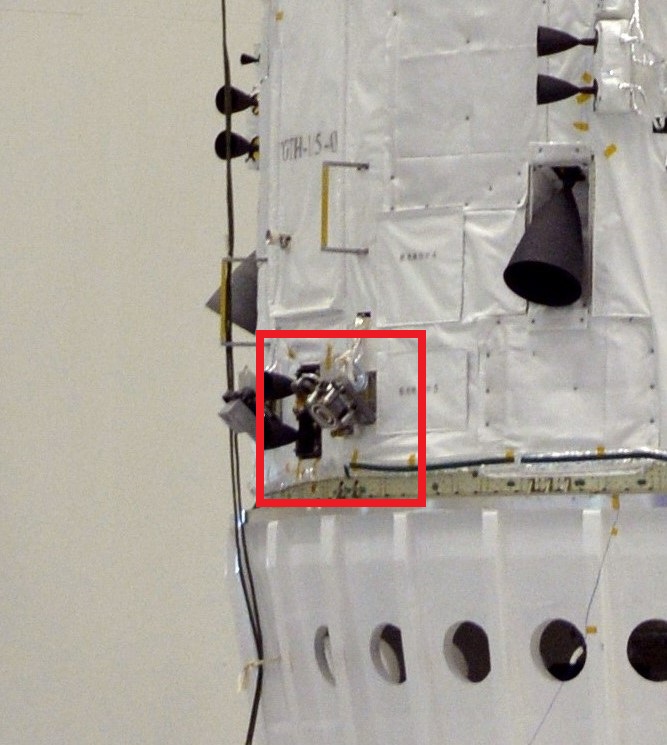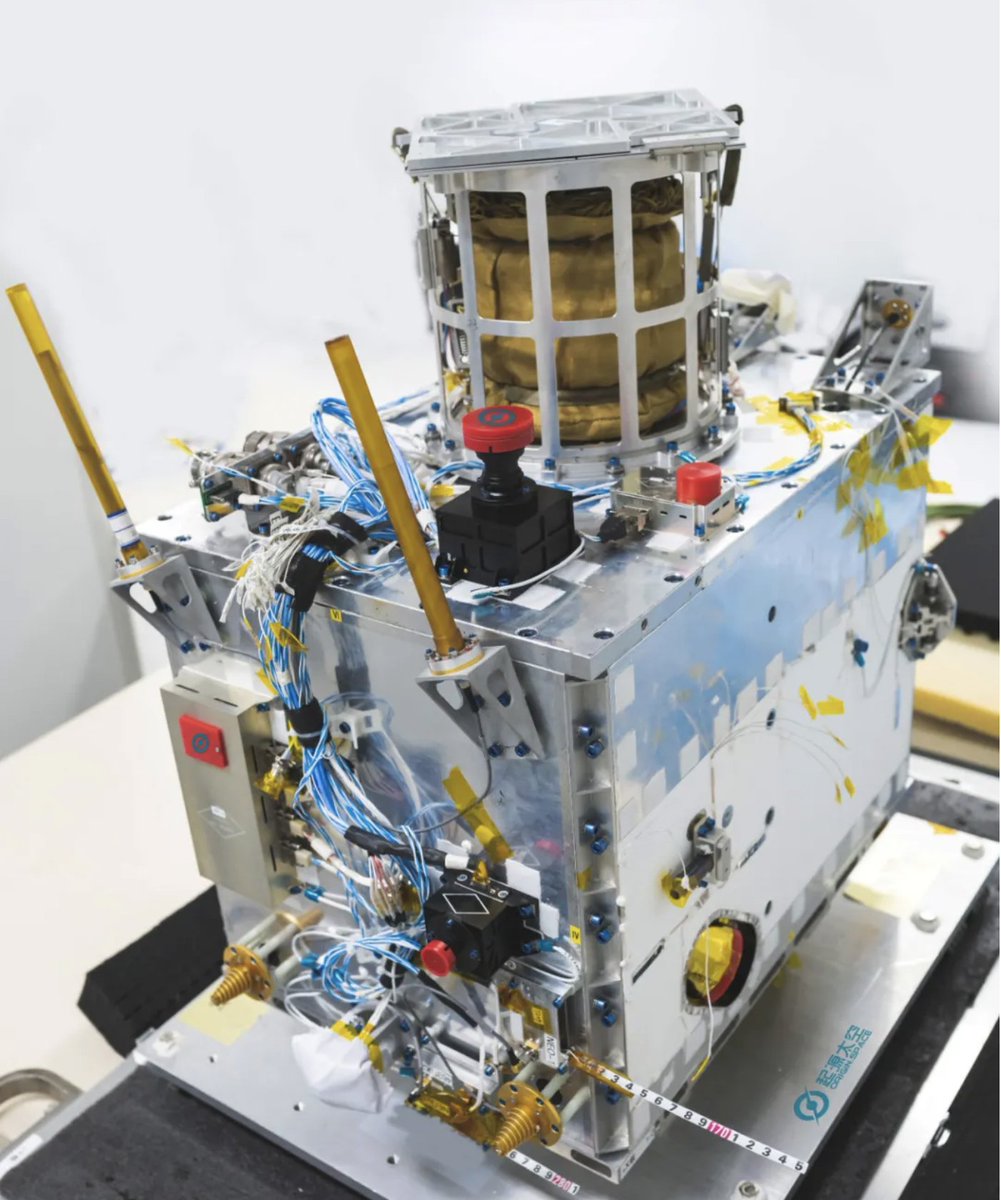Starting a quick thread to track the different engines on the #Tianhe-1 module of the CSS (feel free to comment if smth. is missing!)
Let's first start with the fact that Tianhe-1 is equipped with 30 thrusters, of which 26 are chemical thrusters, and 4 are Hall Effect thrusters.
Let's first start with the fact that Tianhe-1 is equipped with 30 thrusters, of which 26 are chemical thrusters, and 4 are Hall Effect thrusters.
Most thrusters are situated on the non-pressurized propulsion compartment at the very back of the Tianhe-1: a compartment that has a diameter of 4.2m & a height of 2.1m. This area is literally full of propellant! Its dry mass is 487 kg, but weighs 4.3 tons once fueled up... 

Among these 26 thrusters, 4 are larger orbital control thrusters, which are very visible on pictures. They have an angle of inclinaison with the axis of the Tianhe-1, presumably to avoid having the thrust affect the core module exterior wall. 

Technically these could have been installed at the rear side of the Tianhe-1, but this was not possible because a docking port was put there instead (for the Tianzhou cargo spacecraft).
The other 22 chemical thrusters are for attitude control, mostly located on the propulsion compartment, although some seem to also be at the front (see images).
One question though: I couldn't count exactly 22 thrusters on the image. Anyone know where I'm getting it wrong?
One question though: I couldn't count exactly 22 thrusters on the image. Anyone know where I'm getting it wrong?

I was unable to find information on the engine models used, but presumably we are looking at the same MMH/N204 bipropellant engines used on Tianzhou and other CN spacecraft.
Especially since Tianhe-1 gets refueled by... Tianzhou.
Especially since Tianhe-1 gets refueled by... Tianzhou.
The 4 Hall-effect thrusters are at the rear of the Tianhe-1, and use Xenon as their propellant. They are the HET-80 from the Shanghai Institute of Space Technology. Thanks to @AJ_FI @raz_liu @ClosertoSpace @SegerYu for helping me figure that one out a couple of weeks ago. 

Attitude control is not only performed by thrusters. The Tianhe-1 has 6 control moment gyros (CMGs) which are situated on the outside of the Tianhe-1 to avoid creating too much noise for the living quarters of the taikonauts (CMG = heavy disk spinning fast = vibrations, noise) 

I don't think the exact characteristics of the CMGs have been disclosed. But considering that there are 6, this seems to suggest that they are single-axis CMGs: you need 3 to control the 3 rotational axis, and then you have 3 more for redundancy... (this is pure speculation).
Lastly, a spacecraft docked to the Tianhe-1 can also perform attitude control. This is notably the case of the #Tianzhou spacecraft, and the fact that they are docked at the endpoints is helpful for angular momentum...
#Soyuz can do something similar for the ISS as well.
#Soyuz can do something similar for the ISS as well.

The upcoming experimental modules #Mengtian and #Wentian will also play a role in terms of attitude control, but I believe not much information has been revealed on them (yet). 

Feel free to add anything I may have forgotten or gotten wrong 🙂
• • •
Missing some Tweet in this thread? You can try to
force a refresh


















